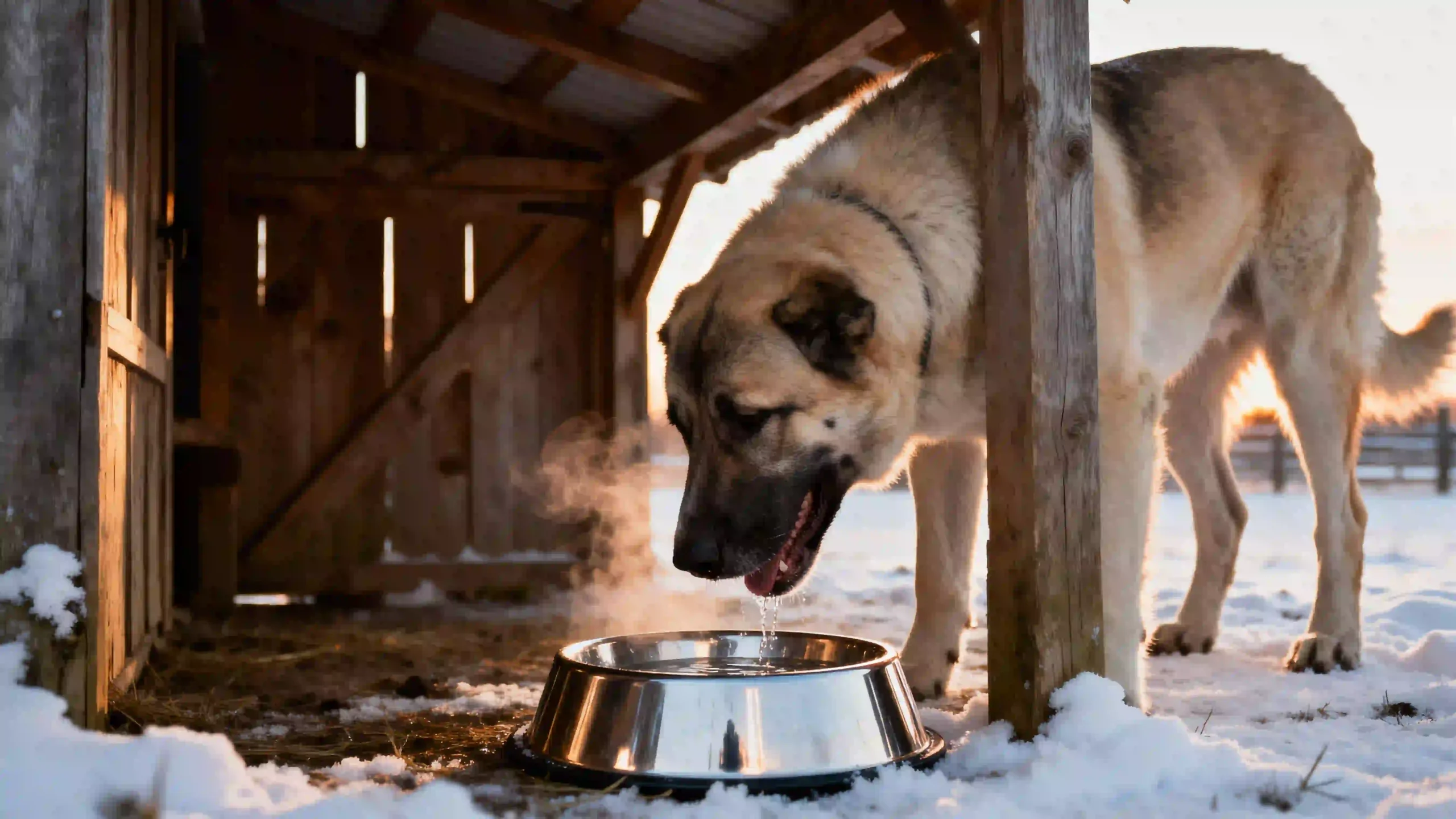Walking out to your barn on a crisp winter morning, you notice your guard dog circling a frozen water bowl. It’s a familiar frustration on farms across the country: cold weather makes hydration a daily challenge. Installing a heated dog bowl solves this problem—but doing it safely ensures your dogs stay healthy and your farm stays accident-free.
Choosing the Right Heated Dog Bowl
Not every heated bowl can withstand snow, mud, or a curious livestock nose. You need a model built for rugged farm life. Stainless steel bowls are a top choice because they resist cracking and are simple to clean. For example, the WoofTrainer Heated Dog Bowl combines durability with safety. Its food-grade 18/8 stainless steel design holds enough water for multiple dogs, while a 50W low-voltage heating element keeps water just above freezing—even when temperatures drop to -20°C. The 1.3-meter chew-resistant cord and rubber-ringed base prevent accidents, making it ideal for dogs and livestock alike. Choosing a bowl like this minimizes maintenance and ensures your dogs always have access to water.
Selecting the Best Location
Placement makes all the difference. Pick a sheltered spot that protects the bowl from wind and falling debris, but is easy for you to reach daily. Avoid high-traffic areas where cords could be chewed by dogs or tripped over by farm equipment. Many farmers place bowls along fence lines or under partial barn overhangs. This not only protects the wiring but keeps water accessible for your dogs without adding extra chores to your day.
Safe Outdoor Wiring Practices
Electricity and barns can be a risky mix if handled carelessly. Always use GFCI-protected outlets to prevent shocks, and choose outdoor-rated cords if an extension is needed. Running wires through PVC conduits or protective tubing helps prevent chewing or weather damage. Make it a habit to check connections weekly, especially after snow or ice buildup. Safe wiring ensures your heated bowls keep running all winter without posing hazards to people or animals.
Barn and Farm Safety Considerations
Even a well-installed bowl can become a hazard if you ignore your environment. Keep the area clear of flammable material and monitor for ice accumulation. Regularly inspect cords, plugs, and the bowl itself. Dogs are great at letting you know when something’s off—they’ll avoid drinking if water is too cold, too warm, or tastes strange. By observing their behavior, you can spot issues before they become emergencies.
Practical Tips for Long-Term Maintenance
Maintenance doesn’t have to be a chore. Empty and clean bowls weekly, and check that the heating element works properly. If you have multiple dogs or pens, consider rotating bowls to extend their lifespan. Insulating water lines or burying them underground reduces freezing risk. Small adjustments like these save labor and keep your dogs consistently hydrated.
Real-World Installation Scenarios
Farmers often spread bowls strategically across large properties. A perimeter guard dog might have a bowl near their usual patrol route, while a sheepdog pen could have multiple bowls spaced to minimize travel. Some ranchers even pair solar-powered heating with low-voltage bowls for remote locations. This reduces wiring complexity and ensures dogs in every corner of the farm have access to liquid water, no matter the weather.
Incorporating Durability and Efficiency
When selecting heated bowls, balance durability with energy efficiency. The WoofTrainer, for example, is built to last in harsh conditions while drawing only 50W. Thermostatic control activates heating only when needed, keeping electricity usage minimal. Over a winter, this approach reduces labor, prevents repeated ice-breaking, and protects your dogs’ health—all while giving you peace of mind that the bowl will keep functioning reliably.
Final Thoughts
Installing a heated dog bowl on your farm is a practical step toward healthier, happier dogs. With the right bowl, safe wiring, and thoughtful placement, you can cut down on daily labor while ensuring consistent hydration. Farmers often find that regular inspections, routine cleaning, and careful placement transform heated bowls from a convenience into a reliable farm asset.
For additional guidance on reducing chores, protecting your dogs from winter dehydration, and choosing durable setups, explore more info.
How Heated Dog Bowls Help Reduce Chores on the Ranch
The Cost Savings of Heated Dog Bowls for Large Properties
Safety Guidelines for Electric Heated Dog Bowls in Boarding Facilities


